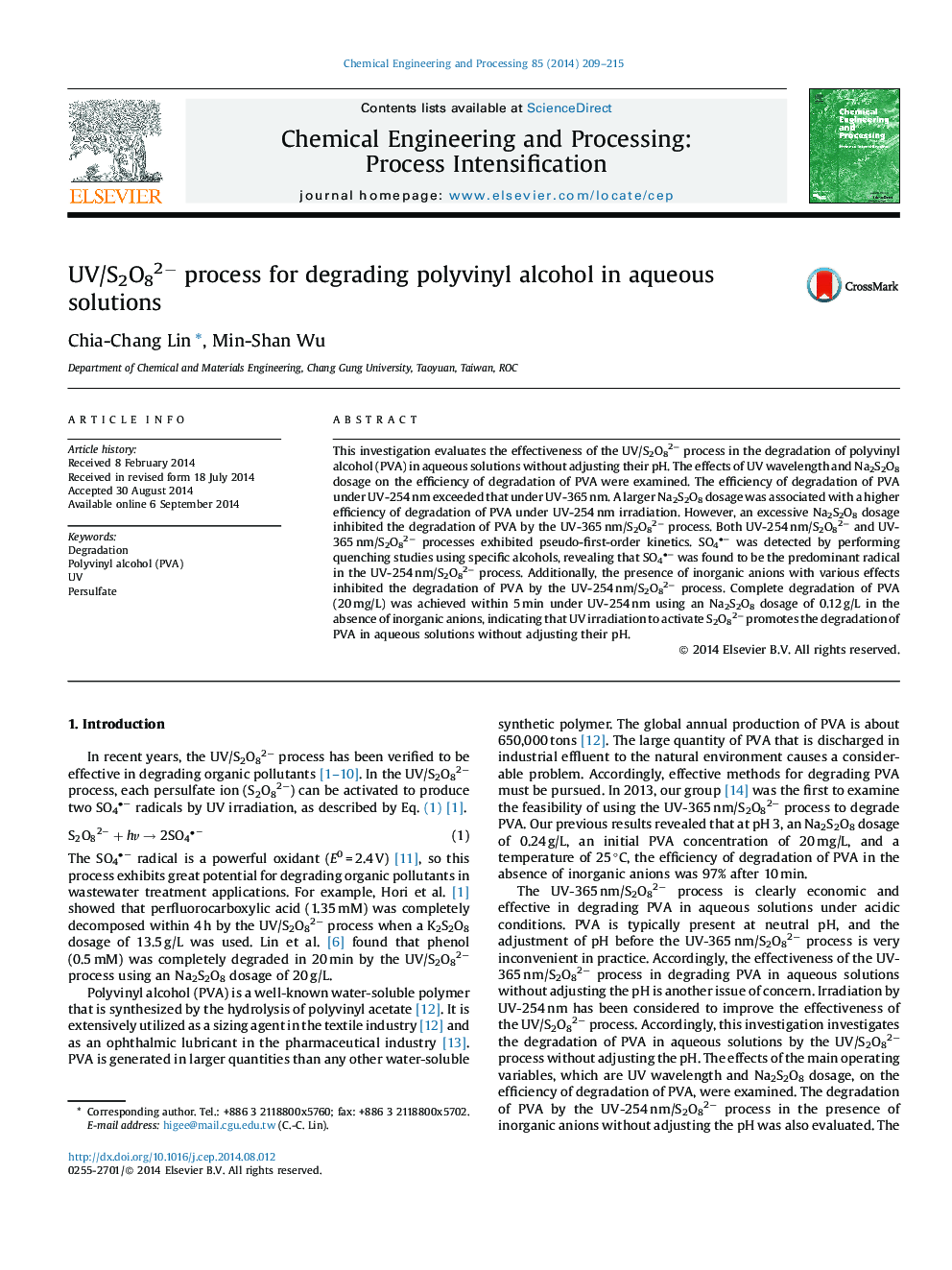| کد مقاله | کد نشریه | سال انتشار | مقاله انگلیسی | نسخه تمام متن |
|---|---|---|---|---|
| 686852 | 1460092 | 2014 | 7 صفحه PDF | دانلود رایگان |

• A complete degradation of PVA using the UV-254 nm/S2O82− process was achieved.
• SO4− was a predominant radical in the UV-254 nm/S2O82− process.
• Different anions provided different inhibitive effects on the degradation of PVA.
• This investigation provides a novel treatment of wastewater contaminated with PVA.
This investigation evaluates the effectiveness of the UV/S2O82− process in the degradation of polyvinyl alcohol (PVA) in aqueous solutions without adjusting their pH. The effects of UV wavelength and Na2S2O8 dosage on the efficiency of degradation of PVA were examined. The efficiency of degradation of PVA under UV-254 nm exceeded that under UV-365 nm. A larger Na2S2O8 dosage was associated with a higher efficiency of degradation of PVA under UV-254 nm irradiation. However, an excessive Na2S2O8 dosage inhibited the degradation of PVA by the UV-365 nm/S2O82− process. Both UV-254 nm/S2O82− and UV-365 nm/S2O82− processes exhibited pseudo-first-order kinetics. SO4− was detected by performing quenching studies using specific alcohols, revealing that SO4− was found to be the predominant radical in the UV-254 nm/S2O82− process. Additionally, the presence of inorganic anions with various effects inhibited the degradation of PVA by the UV-254 nm/S2O82− process. Complete degradation of PVA (20 mg/L) was achieved within 5 min under UV-254 nm using an Na2S2O8 dosage of 0.12 g/L in the absence of inorganic anions, indicating that UV irradiation to activate S2O82− promotes the degradation of PVA in aqueous solutions without adjusting their pH.
Journal: Chemical Engineering and Processing: Process Intensification - Volume 85, November 2014, Pages 209–215